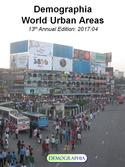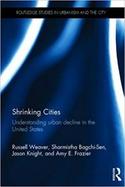Many of the world’s biggest cities are getting bigger still. In 2017, the number of megacities --- urban areas with better than ten million people --- increased to 37 in 2017, as the Chennai urban area entered their ranks. Chennai becomes India’s fourth megacity, along with Delhi, Mumbai and Kolkota. These are among the major findings in the just released 13th annual edition of Demographia World Urban Areas, which provides population, land area and population density estimates for the 1,040 identified built-up urban areas (cities) in the world. read more »
Urban Issues
The 37 Megacities and Largest Cities: Demographia World Urban Areas: 2017
- Login to post comments
Deindustrialisation in Sydney
According to property analysts CoreLogic, the Sydney median vacant land selling price has hit $450,000, a massive 20.5 per cent higher than the same time last year. read more »
- Login to post comments
Should Transit Fares Cover Operating Costs?
Maryland has long had a state law requiring transit systems to collect enough fares to cover at least 35 percent of their operating costs. While it is admirable to set a target, this particular target is disheartening for two reasons. read more »
Welcome to South Chicago
If you've been reading my stuff here long enough, you probably know that cringe when I hear people talk about Chicago's South Side as a monolith, as code for black and poor. The truth is, there are many facets to the South Side. It is largely black, but not exclusively so; it is less wealthy than other parts of the city and region, but with pockets of wealth also. It has its very troubled spots, but it has places of promise. read more »
- Login to post comments
Bay Area Residents (Rightly) Expect Traffic to Get Worse
In a just released poll by the Bay Area Council a majority of respondents indicated an expectation that traffic congestion in the Bay Area (the San Jose-San Francisco combined statistical area) is likely to get worse. read more »
- Login to post comments
Urban leaders should plan for the public transit of the future
Self-driving, automated cars are coming. There will be teething pains in many forms: Some people will want highly automated vehicles while others will fear them. Some will be privately owned, and others will be taxis and shuttles for use by different people every day. read more »
To Reunite America, Liberate Cities to Govern Themselves
Time magazine’s 2016 Person of the Year was elected president, as the magazine’s headline writer waggishly put it, of the “divided states of America.” read more »
Transit Ridership Down 2.3% in 2016
With little fanfare, the American Public Transportation Association (APTA) released its fourth quarter 2016 ridership report last week. When ridership goes up, the lobby group usually issues a big press release ballyhooing the importance of transit (and transit subsidies). But 2016 ridership fell, so there was no press release. read more »
- Login to post comments
The Ghost of Mamie Eisenhower
There’s a certain amount of nostalgia these days for 1950’s suburbs when men were men and ladies mopped linoleum floors in white pumps and pearls. I’m not entirely sure that world ever really existed precisely the way it was portrayed on black and white television, but we seem to want it to be true. read more »
What Do We Do With Shrinking Cities?
Shrinking Cities: Understanding Urban Decline in the United States
By Russell Weaver, Sharmistha Bagchi-Sen, Jason Knight, and Amy E. Frazier
Routledge (2017)
Cities like Detroit, St. Louis, and Cleveland have lost stunning percentages of their peak population since 1950. Yet these are all in metro areas whose regional populations are much higher than in 1950, even if not at their all time peak high in all of them. read more »
- Login to post comments



















